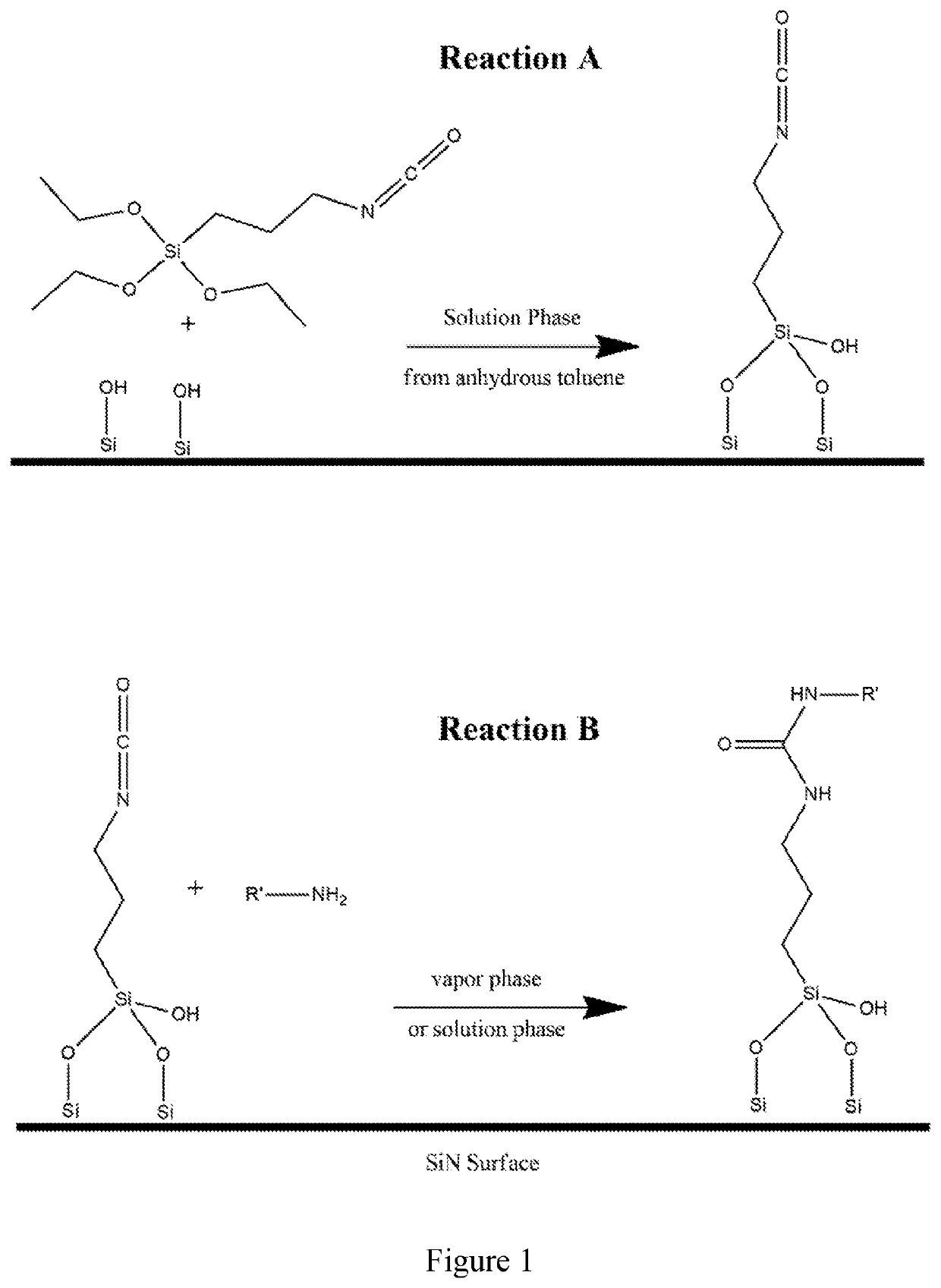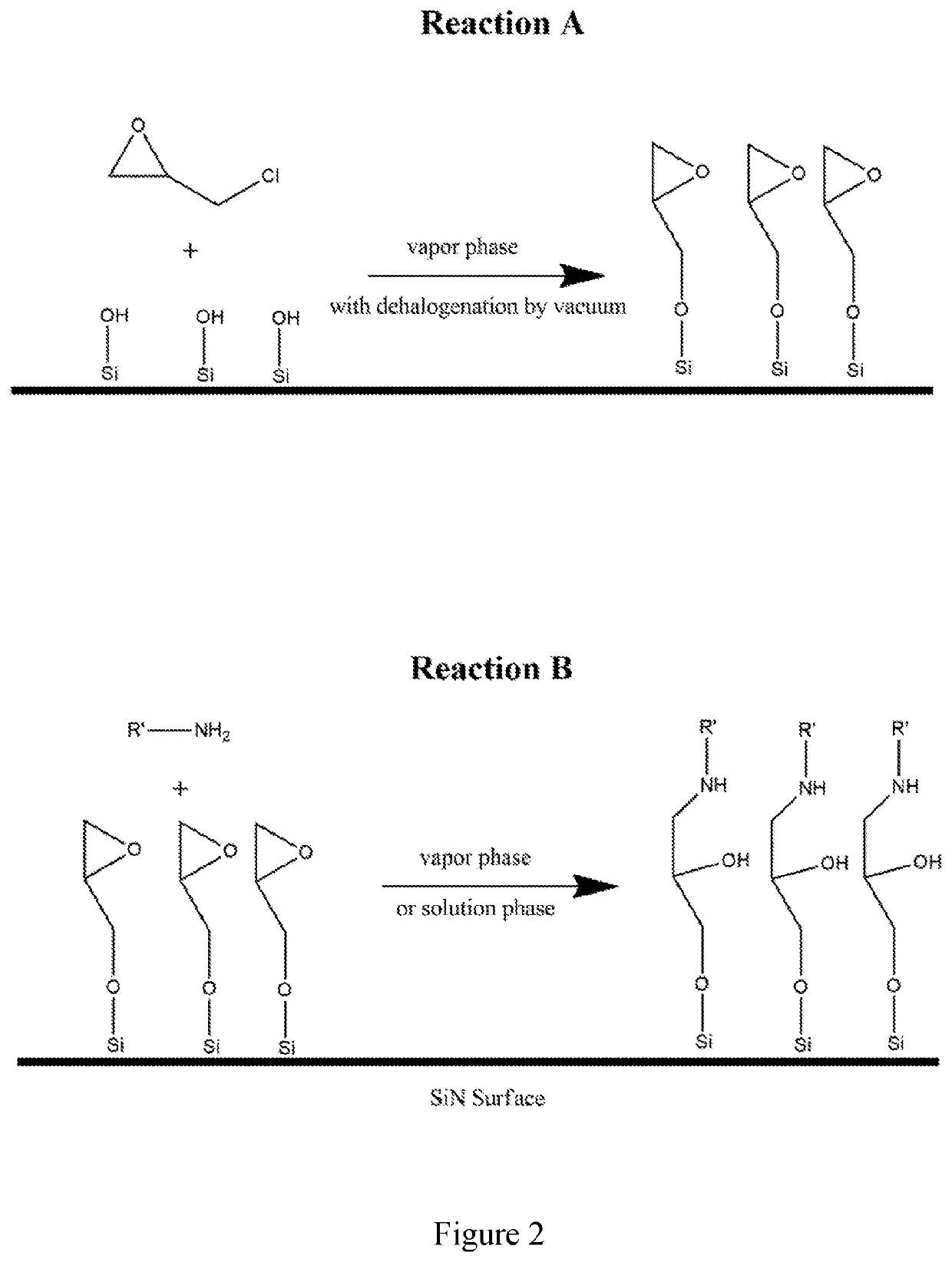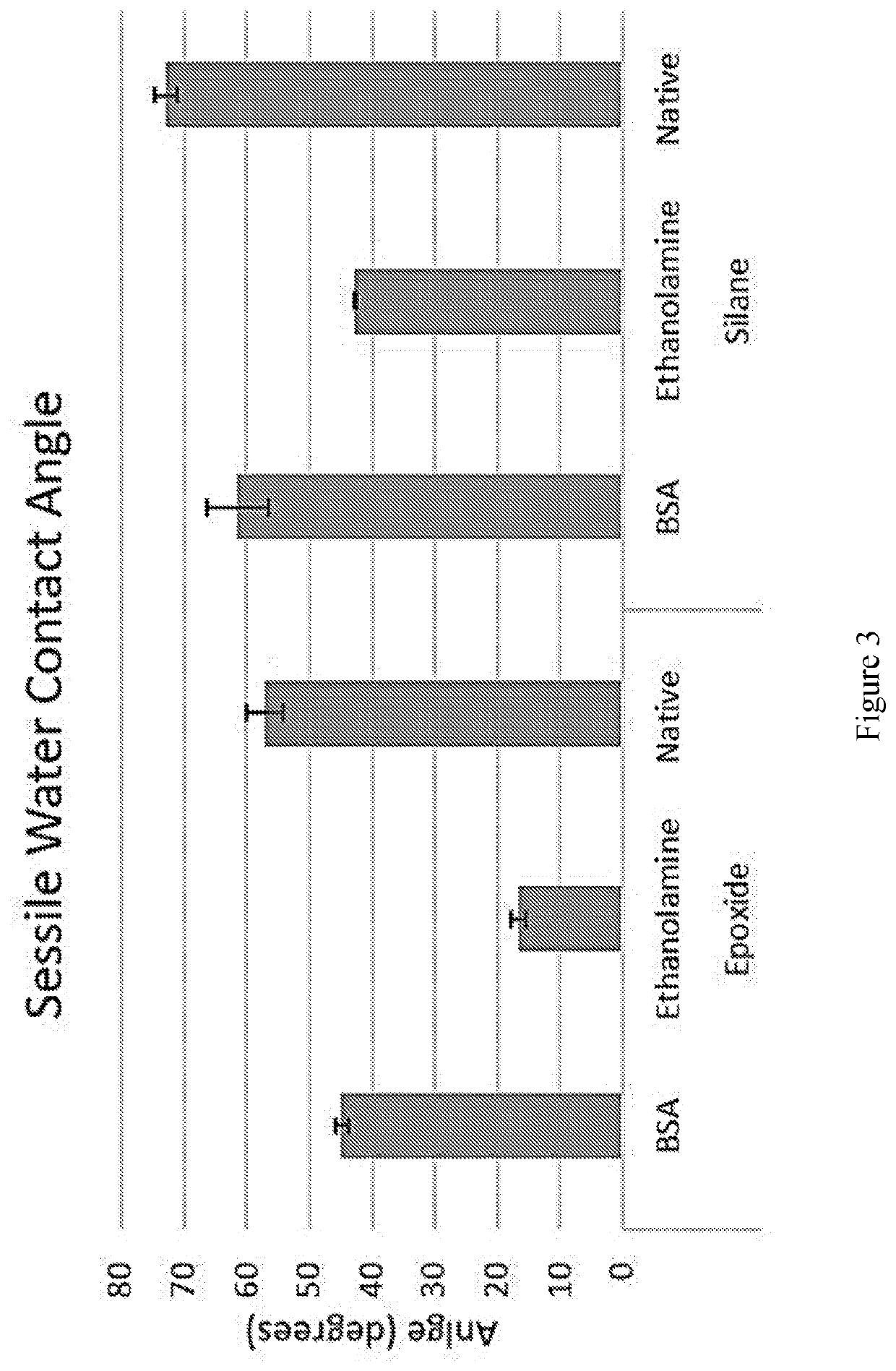Functionalized silicon nanomembranes and uses thereof
- Summary
- Abstract
- Description
- Claims
- Application Information
AI Technical Summary
Benefits of technology
Problems solved by technology
Method used
Image
Examples
example 1
[0249]This example provides a description of preparation and characterization of functionalized of silicon nanomembranes of the present disclosure.
[0250]Chemistry Deposition System development and testing. This examples describes gaseous phase surface derivatization process for low-stress SiN membrane substrates. Additionally, surface decoration will be monitored by subsequent interaction with reactive species.
[0251]Materials. Chemicals used for surface functionalization included 3-(triethoxysilyl)propyl Isocyanate, (+ / −) epichlorohydrin, ethanolamine, toluene (Anhydrous), N-propanol, dimethyl sulfoxide (DMSO), and Fluorescein Isocyanate Isomer 1 were used as received from Sigma Aldrich at ASC grade or better. FIGS. 1 and 2 shows the relevant chemical structures for surface derivatizing schemes explored in this work.
[0252]Experiment Setup. A basic vacuum deposition system was fabricated from off-the-shelf components. Images of the system used are attached for reference. Briefly, a v...
example 2
[0271]This example provides a description of preparation and characterization of functionalized of silicon nanomembranes of the present disclosure.
[0272]Non-fouling demonstration of ethanolamine terminated SiN. The following describes the non-fouling potential of ethanolamine derivatized SiN using an assortment of biofluids.
[0273]Methods. SiN Preparation. This Example utilized piranha cleaned SiN for all surface derivations. An overview of the functionalization process is provided below.
[0274]Substrate Cleaning. A SiN wafer was cleaved into ˜0.75 cm2 substrates, then cleaned via a standard 3:1 piranha recipe for 1 hour at RT. Following cleaning, chips were rinsed in bulk and then individually with freshly prepared 0.2 micron filtered 18.6 mOhm water and then dried under N2 stream.
[0275]Epoxide Functionalization. Using the vacuum deposition system (previously described), cleaned SiN die were transferred to the sample holder, then further dehydrated via a 10 min desiccation at 8 kPa. ...
example 3
[0282]This example provides a demonstration of the biofouling reduction (i.e., non-fouling) effects of the surface treatment methods detailed herein.
[0283]FIG. 9 shows relative surface fouling by a fluorescently labeled bovine serum albumin solution. Image (A) and (B) show fluorescent microscopy (4× magnification) of NPN nanomembrane films untreated and treated with the ethanolamine surface chemistry respectively. Image (C) shows the quantitative whole-field mean fluorescent intensity of both fields shown in (A, B). All data represent the average membrane surface mean fluorescent intensity of a 0.25 mm2 surface area and two replicate chips. The data show that the ethanolamine treatment reduce the extent to which protein is able to absorb to silicon nanomembranes.
[0284]In this example, fluorescently labeled serum albumin and whole sheep blood are used to insult treated or untreated nanomembrane surfaces. A dialysis experiment was run through a 4-membrane 100 nm chip using a flow cell...
PUM
| Property | Measurement | Unit |
|---|---|---|
| Length | aaaaa | aaaaa |
| Fraction | aaaaa | aaaaa |
| Fraction | aaaaa | aaaaa |
Abstract
Description
Claims
Application Information
 Login to View More
Login to View More - R&D
- Intellectual Property
- Life Sciences
- Materials
- Tech Scout
- Unparalleled Data Quality
- Higher Quality Content
- 60% Fewer Hallucinations
Browse by: Latest US Patents, China's latest patents, Technical Efficacy Thesaurus, Application Domain, Technology Topic, Popular Technical Reports.
© 2025 PatSnap. All rights reserved.Legal|Privacy policy|Modern Slavery Act Transparency Statement|Sitemap|About US| Contact US: help@patsnap.com



